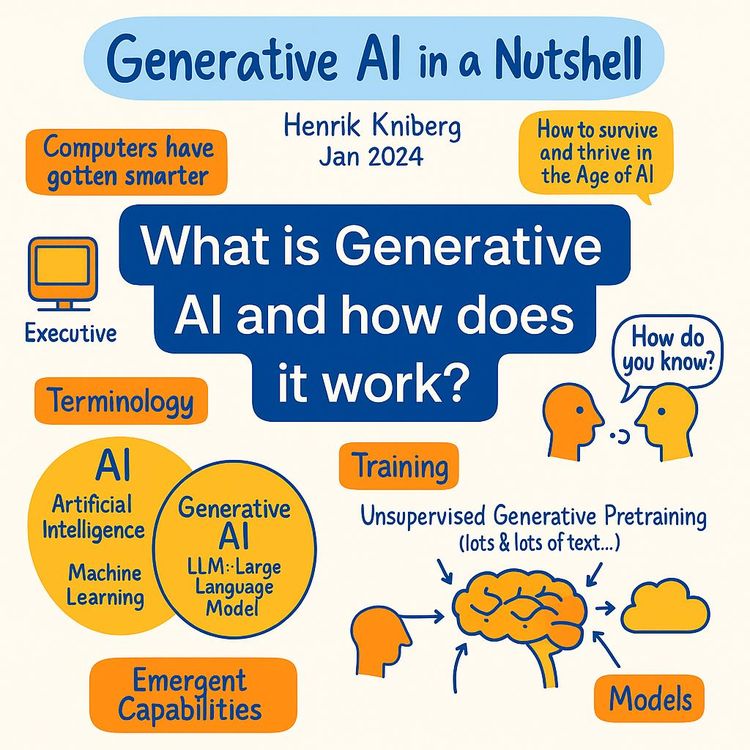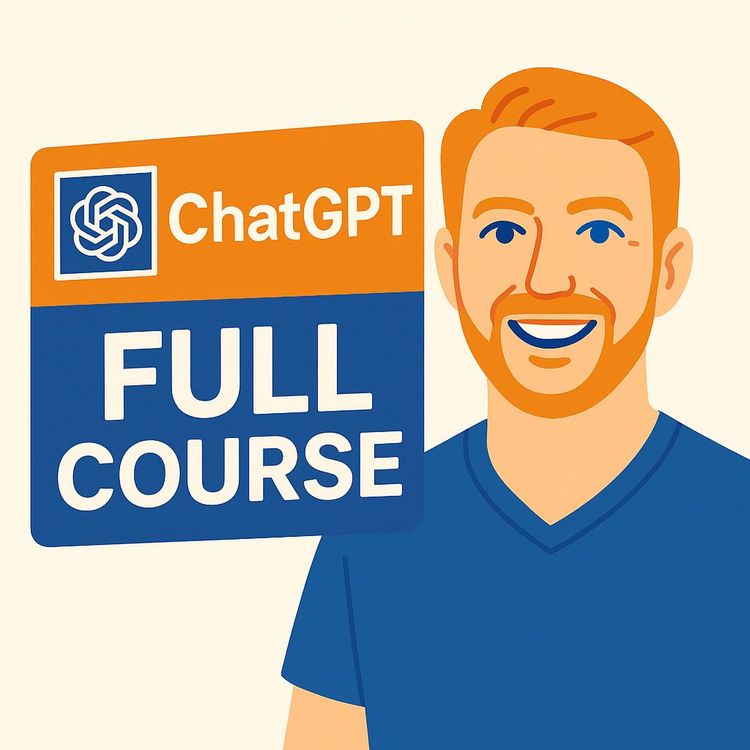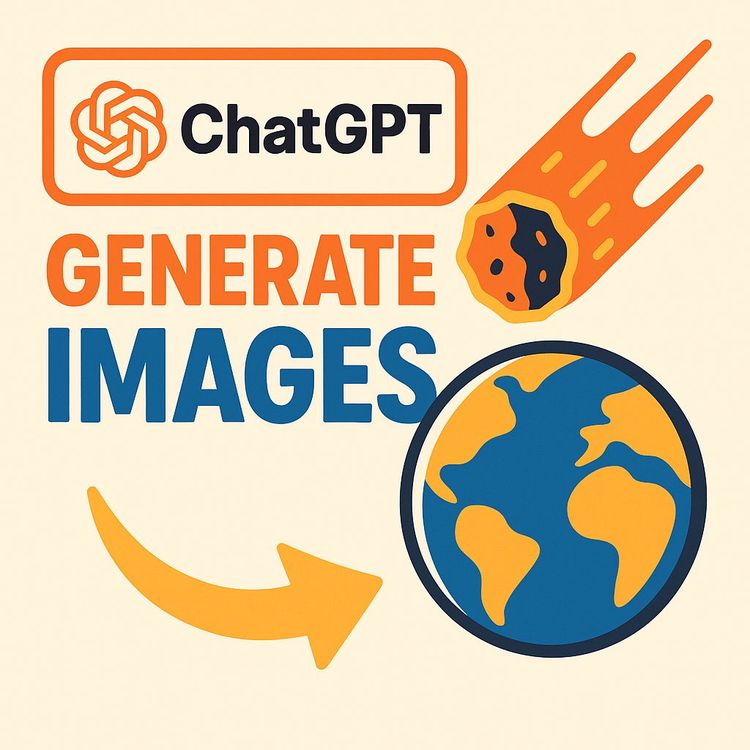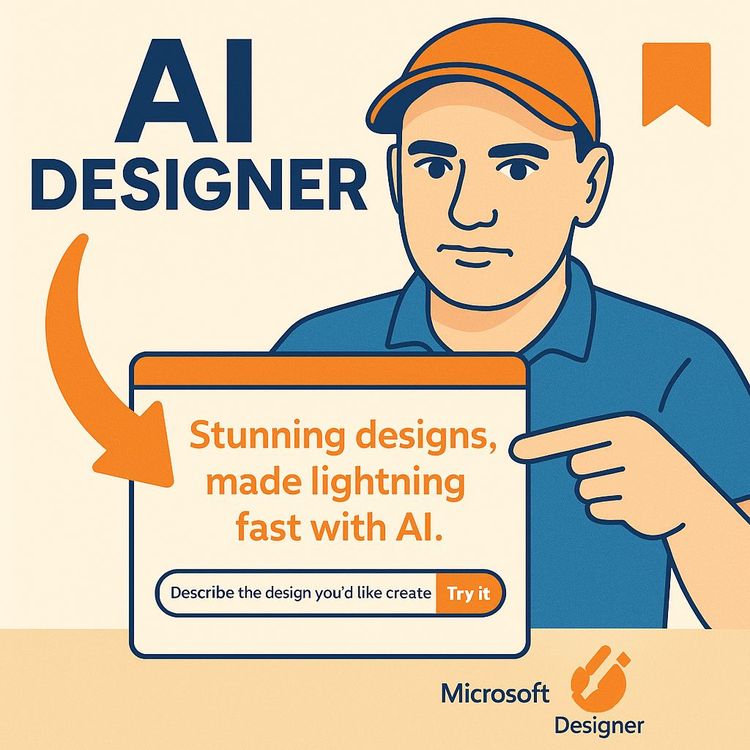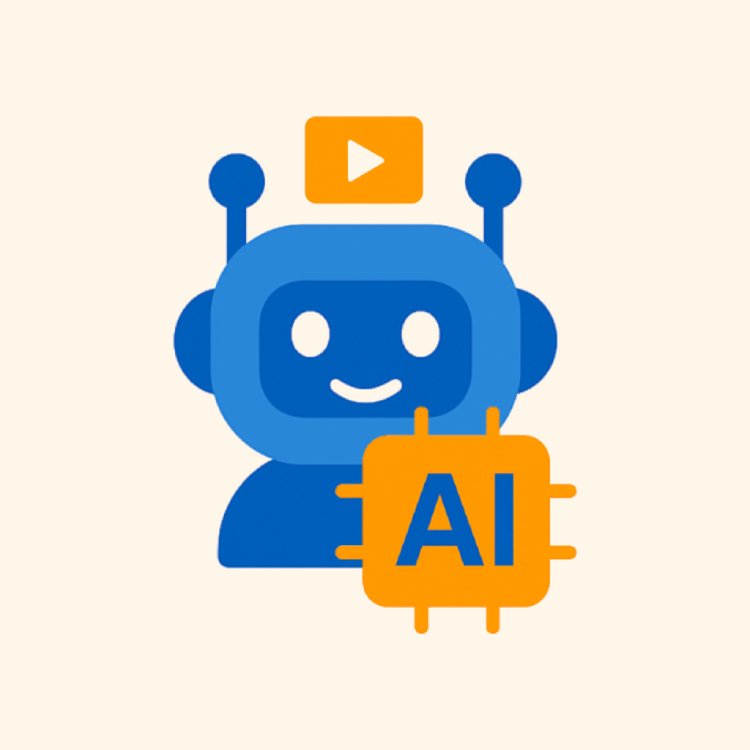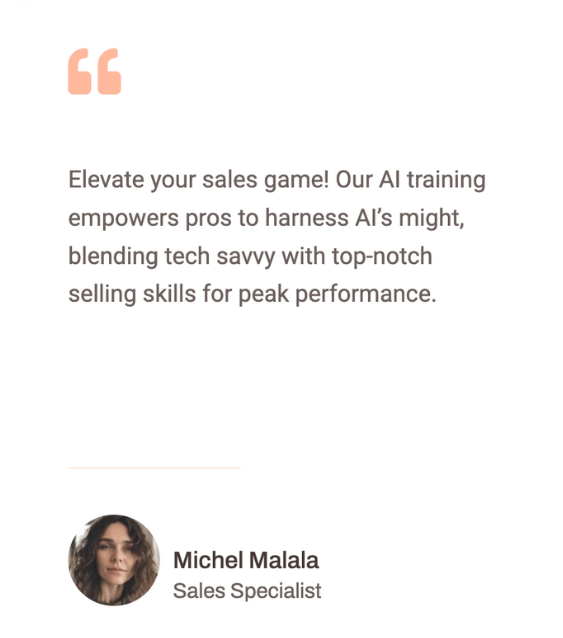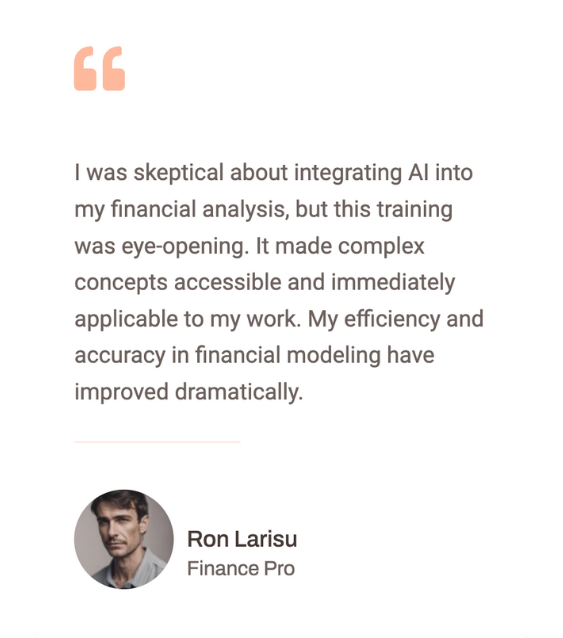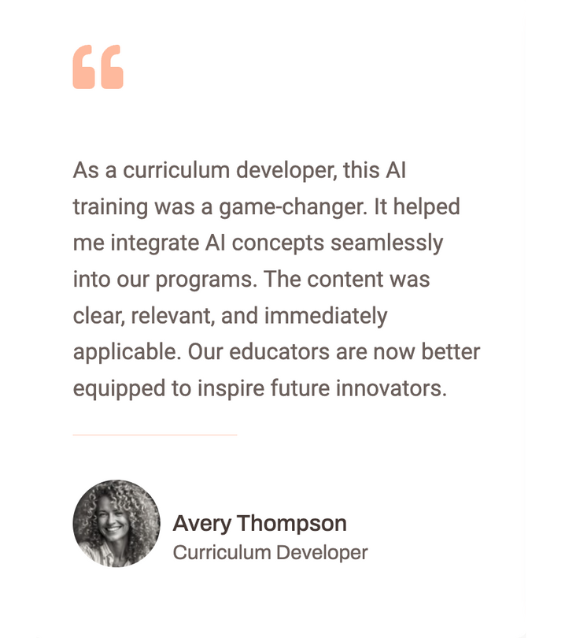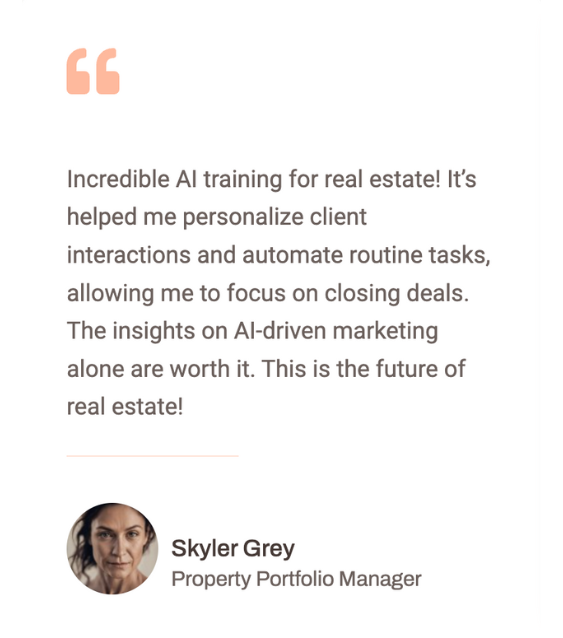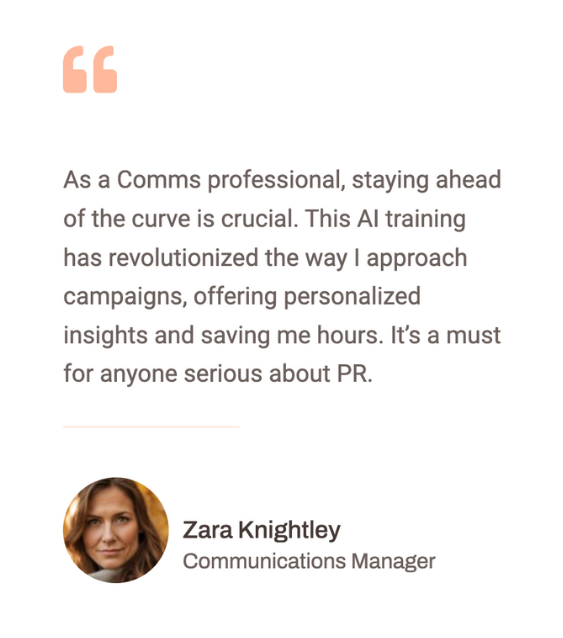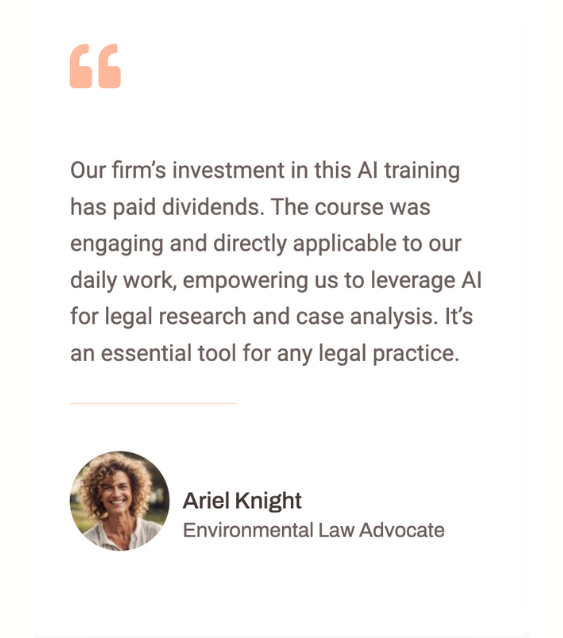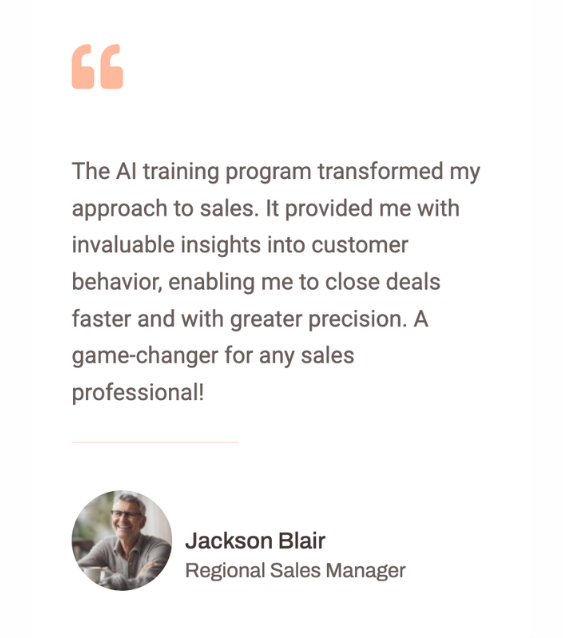AI for Course Creators: Build a Community-First Learning Campus (Video Course)
If your course is just videos, you're hitting a ceiling. This course shows you how to build a real campus,community, live sessions, AI-ready library,and shift from selling info to delivering outcomes. Clear steps, tools, and examples included.
Related Certification: Certification in Building and Scaling AI-Powered Learning Communities
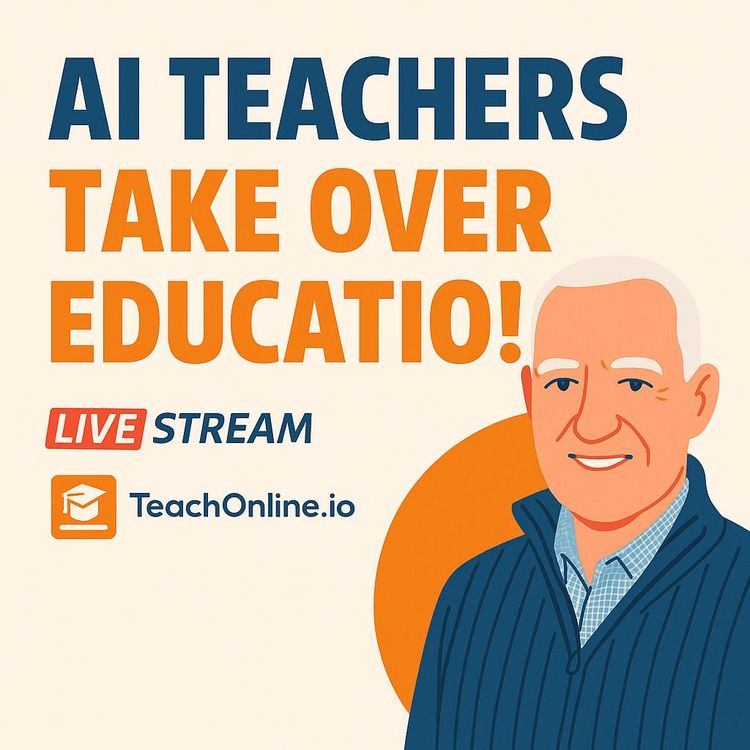
Also includes Access to All:
What You Will Learn
- How to build a privately branded campus with community, content library, and live interaction
- How to design live workshops, office hours, and hot seats that produce real outcomes
- How to structure an AI-ready content library (transcripts, tags, glossary) for search and assistants
- How to package your frameworks as Claude Skills and other AI products for new revenue
- How to launch a tiered education business (free tier, VIP, intensives, services)
- Which community metrics and feedback loops to track to drive retention and results
Study Guide
Introduction: Traditional Teaching Is Finished , And That's Good News
Here's the hard truth: selling static online courses as your main product is a dead end. AI has made information abundant, searchable, and instantly convertible into whatever format a learner wants. That old promise , "buy my videos and you'll know how" , doesn't hold attention anymore. But don't misread this moment as the end of education. It's the end of the content-first, feedback-later model.
What replaces it is far better: a privately branded campus you own. A living ecosystem built on community, a deep content library, and live, interactive teaching. This is not another membership site with a chat box. It's your school , your arena , where your expertise becomes transformation through direct guidance, peer support, and AI-enhanced application.
In this course, you'll learn how to build that campus from scratch, why static courses are collapsing, how new AI tools like ChatGPT Atlas and Claude Skills change the game, and exactly how to evolve your role from "content creator" to community leader. We'll go from big-picture strategy to ground-level implementation. You'll get examples, frameworks, and a practical blueprint for building something that can last.
Authoritative statement:
"Treating education as a course business is an absolute dead end right now."
Section 1: Why the Traditional Course Model Is Obsolete
The old formula was simple: record lessons, upload, price, launch, repeat. That formula collapses under two forces: information abundance and marketing fatigue.
Concept Explained:
AI tools can synthesize tutorials, compare frameworks, summarize long videos, answer questions, and even point out contradictions. The "what" and "how" are no longer scarce. Meanwhile, it's harder and more expensive to differentiate on content alone. Without a huge audience or budget, selling standalone information becomes a grind with dwindling returns.
Why this matters:
People don't want more content. They want the right content at the right time, applied to their situation, with the ability to ask real humans follow-up questions. Static content can't do that. A campus can.
Example 1:
A marketing educator sells a pre-recorded funnel course. A learner opens the landing page inside ChatGPT Atlas, asks it to summarize each module, generate a comparison with three other approaches, and draft a first-pass funnel based on the educator's framework. The content is instantly commoditized. The value left is feedback and execution support , and the educator didn't build that into the product.
Example 2:
A fitness creator sells a meal-prep video course. A learner uses AI to convert the entire course into a grocery checklist, meal plan, and calendar reminders, while swapping recipes for dietary restrictions. The learner never needs to watch the videos end-to-end. Knowledge was captured, but the person still needs accountability, troubleshooting, and individualized plan adjustments , none of which come with a static course.
Best Practices:
- Stop thinking "course launch." Start thinking "education business."
- Build around application and access, not content alone.
- Accept that AI erases the moat of information scarcity. Your moat is human: community, live sessions, personalized help.
Authoritative statement:
"People are looking to talk to people. They want someone that they can ask questions of."
Section 2: The Privately Branded Campus , Your New Education Business
The answer isn't a fancier course. It's a privately branded campus , a digital ecosystem you own, designed for long-term transformation. It has three pillars: community, content library, and live interaction. Each pillar reinforces the others.
Concept Explained:
- Community: a private space where members interact, post wins, ask questions, and learn from peers.
- Content Library: your structured archive , videos, transcripts, frameworks, SOPs, and searchable notes , optimized for both humans and AI.
- Live Interaction: workshops, office hours, group coaching, and open Q&A where you guide implementation and give feedback.
Why it works:
Information is everywhere. Application is scarce. A campus turns "what to do" into "how to do it, for me, right now." This is the premium value AI can't replace.
Example 1:
A copywriting mentor launches a campus focused on offers and emails for solopreneurs. The community swaps critiques. The library holds hundreds of bite-sized lessons and breakdowns. Weekly live "copy clinics" give on-the-spot edits. Members stay not for videos, but for faster results and human context.
Example 2:
An illustrator creates a campus for niche art careers. The community shares work-in-progress, client stories, and pricing tactics. The library includes process walkthroughs and templates. Live sessions break down member portfolios and negotiate mock contracts. The entire system builds skill, confidence, and deal flow.
Pro Tip:
Think "school I wish I had," not "course I can sell." Design for belonging, clarity, and momentum.
Section 3: Pillar One , Community That Compounds Learning
Concept Explained:
Community is not a Discord server where posts go to die. It's a guided environment for progress. You own the space and set the culture. Choose software that gives you control over data, branding, access, and payment tiers.
Platforms:
- WordPress with a community plugin (e.g., Fluent Community) for full ownership.
- Circle as a hosted, user-friendly solution.
- Private forums or purpose-built community tools if you want simplicity and focus.
Design Principles:
- Make it easy to ask for help: clear topic channels, templates for posts, and fast replies.
- Reward contribution: highlight wins, shout out helpful members, and host showcase threads.
- Create rituals: weekly progress check-ins, accountability threads, and themed challenges.
Example 1:
A data analytics campus has channels for "Portfolio Reviews," "SQL Help," and "Interview Prep." Members use a pinned question template. Moderators tag experts to answer within a day. The result: fast feedback and visible progress.
Example 2:
A wellness coach runs "Sunday Setup" where members post their weekly plan. On Wednesdays, a "Problem-Solving Thread" collects roadblocks. On Fridays, a "Wins Wall" captures progress. The rhythm keeps people engaged and consistent.
Best Practices:
- Appoint "Community Captains" from your member base to greet newcomers and answer common questions.
- Write a clear code of conduct. Coach behavior, not just content.
- Seed valuable posts consistently. Don't wait for members to drive the culture , you drive first.
Section 4: Pillar Two , The Content Library That Fuels Authority
Concept Explained:
Your library is not your product. It's your reference layer. It proves your topical authority and feeds both your members and AI assistants with your voice, frameworks, and case studies. Every live session becomes new content. Every Q&A becomes a searchable asset.
Structure:
- Core Path: a simple, minimal sequence for beginners to get quick wins.
- Deep Dives: topic-specific modules, advanced tactics, and case studies.
- Toolkits: templates, checklists, SOPs, and swipe files.
- Transcripts: lightly edited text of every live session, tagged by topic and searchable.
AI-Ready Formatting:
- Use clear headings, concise bullets, and consistent terminology.
- Attach transcripts and summaries to every video or workshop.
- Maintain a glossary of terms and a Q&A index. This helps tools like ChatGPT Atlas and your own site's AI assistant return accurate, on-brand answers.
Example 1:
A design campus uploads workshop recordings and transcripts with tags like "pricing," "scope," "client onboarding." Members and AI can instantly surface every moment the creator explained scope creep. This dramatically reduces repeated questions and accelerates learning.
Example 2:
A sales coach maintains a live "Call Breakdown Vault." Each recording is paired with a one-page summary, time-stamped highlights, objections handled, and templates used. Members binge the vault before sales calls and share results in the community.
Best Practices:
- Keep videos short and searchable. Break long recordings into chapters.
- Favor clarity over production polish. Good audio, clear visuals, and useful transcripts beat cinematic intros.
- Name files consistently. Your future self (and your members) will thank you.
Section 5: Pillar Three , Live Interaction as Your Premium Value
Concept Explained:
Live sessions are where you turn theory into transformation. These are not lectures. They are working sessions: apply, troubleshoot, adapt. This is the part AI can't replace , your judgment, your vibe, your ability to read a person and get them unstuck.
Formats:
- Workshops: focused skill sprints with a clear output by the end.
- Office Hours: open Q&A and quick feedback on works-in-progress.
- Group Coaching: structured progress reviews and accountability cycles.
- Open Classrooms: themed sessions where you demo and members follow along.
Example 1:
In a "Landing Page Sprint," members write headlines live while you review in real time. You share your judgment: what to keep, what to cut, what to test. Members leave with a deployable page, not just notes.
Example 2:
In "Portfolio Hot Seats," two members present for five minutes each. You critique positioning, visuals, and messaging. The whole room learns. The recording goes into the "Portfolio" section with timestamps for easy reference.
Best Practices:
- Always define a clear outcome for each session.
- Rotate time zones or offer alternating session times to include more members.
- End with a simple checklist or "next three actions" so progress continues after the call.
Section 6: The AI Disruptors You Must Understand
Two technologies are forcing this shift and unlocking new opportunities: ChatGPT Atlas and Claude Skills.
Section 6.1: ChatGPT Atlas , The Integrated AI Browser
Concept Explained:
Atlas is a browser-like application with ChatGPT deeply integrated. It can converse about the content of any open webpage, including course pages and video transcripts, and take actions on the web through an agent mode.
Core Capabilities:
- Contextual conversation about any page's content (including lessons and transcripts).
- Automated task execution: posting on community forums, filling out forms, creating docs, organizing notes, and more.
Impact on Educators:
- Your on-page chatbot becomes redundant; learners can bring their own AI.
- Static content loses its moat; learners use Atlas to synthesize, critique, and personalize your material.
- The winning move is to provide live guidance, context, and community , the parts Atlas can't replicate.
Example 1:
A student opens your SEO tutorial in Atlas, asks it to extract the key tasks and create a Kanban board. Then they ask for a personalized plan for their niche with example keywords. They start implementing without watching your entire video. To retain them, your offer must include review and feedback on their work, plus Q&A.
Example 2:
In your community, a member asks, "What's the fastest way to validate this idea?" Atlas goes through your content library and posts a distilled checklist. The conversation still benefits from your judgment: "Which channel should I test first?" That's where your live guidance matters.
Best Practices:
- Publish transcripts and summaries with clear headings. You're not helping competitors; you're helping your learners and their AI work faster.
- Design pages with structure and clarity so AI extracts accurately.
- Don't fight AI. Integrate it. Use Atlas-like behavior as a feature of your teaching, not a threat.
Section 6.2: Claude Skills , Package Your Expertise as AI Tools
Concept Explained:
Claude Skills let you turn your frameworks into stackable, monetizable AI capabilities. Think of each skill as a mini-expert trained on your process that people can use inside Claude to complete tasks your method is famous for.
How It Works:
- You define instructions, inputs, and outputs for a specific process (e.g., "Offer Builder," "Lesson Plan Creator," "Discovery Call Script").
- You export/share the skill as a digital product. Customers load it into Claude and use your framework instantly.
Why It Matters:
Instead of selling passive knowledge, you sell a tool that implements your knowledge. It's a new revenue stream and a loyalty loop for your campus.
Example 1:
A career coach sells a "Resume Reframer" skill that rewrites bullet points using action-impact-proof structure. The bundle includes a "Interview Story Builder" skill that turns projects into concise STAR stories. Members of the campus get both inside a premium tier.
Example 2:
A course creator builds a "Content OS" skill: input a niche, audience pains, and a desired offer. The skill outputs a month of video prompts, hooks, CTAs, and a publishing schedule. The add-on "Distribution Mapper" skill turns each post into platform-specific variants.
Best Practices:
- Start with one skill that solves your members' most common bottleneck.
- Provide a quick-start guide and example inputs so users get wins immediately.
- Bundle skills with your live sessions: "Bring your output to the workshop and I'll refine it."
Section 7: Content Strategy in the AI Era , The "Grandpa Method"
Concept Explained:
Polished, cinematic content is less effective than honest, high-volume, lightly edited content. The "Grandpa Method" is simple: talk directly, say what you know, demonstrate it live, and hit publish. Quantity creates discoverability and a transcript-rich library that builds topical authority.
Approach:
- Publish frequent, focused videos answering one real question at a time.
- Record live or in one take when possible. Trim the fluff, keep the substance.
- Repurpose the transcript into posts, emails, and knowledge base articles.
Example 1:
A software educator films short screen shares showing one feature per clip: "How I audit performance," "How I write a migration plan," "How I debug X." Each video becomes a post, a checklist, and a library entry. In months, they've built a definitive resource on their topic.
Example 2:
An art educator runs live sketch sessions. The replays and transcripts go into "Line Work," "Value," and "Composition" categories. Members can search every mention of "edge control" across dozens of sessions to accelerate their growth.
Topical Authority Tips:
- Map your topic into pillars, subtopics, and questions. Aim to cover hundreds of tightly scoped prompts over time.
- Use recurring formats (teardown, critique, live build, Q&A) to reduce planning overhead.
- Optimize for speed to publish, not perfection. The library is cumulative , the volume compounds.
Section 8: Monetization Beyond Courses , Build a Tiered Education Business
Concept Explained:
You're not selling videos. You're selling access, application, and outcomes. Your model should include a free community tier, paid VIP tiers with live access, and optional AI tools and mentorship.
Model Components:
- Free Community: public channels, basic resources, and email capture.
- Paid VIP: live classes, private support, premium library, and Claude Skills access.
- Intensives/Mentorship: small-group sprints or 1:1 programs at a higher price point.
- Services: "done-with-you" or "done-for-you" for those who want outcomes faster.
Example 1:
A branding educator runs a free community for portfolio sharing and announcements. The VIP tier includes weekly workshops and a template vault. A short intensive helps members land their first three clients with direct review of proposals and calls.
Example 2:
A language educator offers free conversation clubs. VIP members get structured speaking labs, pronunciation clinics, and a translation skill that practices with their own scripts. High-touch packages include accent coaching with recorded feedback.
Best Practices:
- Don't hide everything behind a paywall. Use the free tier to build trust and momentum.
- Make the VIP pitch simple: "Come build it with me live. Get feedback. Leave with assets."
- Bundle AI tools with VIP to create tangible, immediate value.
Section 9: Step-by-Step , Build Your Privately Branded Campus
Step 1: Choose Your Topic and Transformation
- Define the specific outcome your campus delivers. "Beginner coders to paid projects." "Illustrators to consistent clients." "Side hustlers to their first five sales."
- Write a one-sentence promise you can deliver in public and live sessions.
Step 2: Select Your Platform Stack
- Community: WordPress + community plugin (e.g., Fluent Community) for full control, or Circle for a hosted option.
- Video Hosting: Vimeo or Bunny.net for privacy and reliable playback.
- AI Integration: WordPress plugins like AI Engine to embed AI assistants trained on your content library. Tie this to your transcripts and glossary.
Step 3: Architect the Library
- Draft a Core Path with minimal steps for quick wins.
- Build categories for deep dives and tools.
- Establish naming conventions and a tagging system for AI-friendly search.
Step 4: Design Your Live Programs
- Choose one weekly anchor: workshop, copy clinic, teardown, build-along.
- Add a rotating format: hot seats, office hours, or themed Q&A.
- Create simple prep docs so attendees show up ready to work.
Step 5: Open the Doors with a Simple Founders Launch
- Invite your existing audience and a handful of target members.
- Offer a clear early adopter deal with access to live sessions and the growing library.
- Promise a set number of live sessions in the first cycle and deliver relentlessly.
Step 6: Install Feedback Loops
- Monthly surveys: "What's your biggest block?" "What training do you want next?"
- Quick polls after sessions: "Useful?" "What was missing?"
- Track metrics: active members, posts and replies, session attendance, VIP retention.
Example 1:
A front-end developer launches "Freelance Dev Campus." They pick WordPress + Flutter theme styling + Fluent Community. Library starts with a "First Client Path." Weekly live "Proposal Clinics" become the signature offer. Each clinic adds to the library; transcripts train the site's AI assistant for instant answers.
Example 2:
A nutritionist launches "Energy Reset Campus." They host live meal-prep sessions and Q&A. The library houses recipes, shopping lists, and a troubleshooting guide. A simple Claude Skill turns macro targets into weekly meal plans. Members share kitchen photos in the community for accountability.
Best Practices:
- Keep your stack simple at launch. Add bells and whistles later.
- Over-communicate schedules, expectations, and outcomes.
- Record everything. Every minute can become library gold.
Section 10: Implementation Blueprint , Your First Build Cycle
Week-by-Week Style Without Dates
- Phase 1: Foundation , pick platform, set up brand, create three community channels, and load the first five library items (one core path, two deep dives, two tools).
- Phase 2: Soft Open , invite an initial batch of members, run your first live session, and gather feedback.
- Phase 3: Consistency , host weekly live sessions, publish daily prompts in the community, and add each session's transcript to the library.
- Phase 4: Monetize , roll out VIP with additional live time and access to your first Claude Skill.
Example 1:
A writing campus launches with "3 Core Lessons": Story, Structure, Editing. The first live clinic is "Hook Teardowns." The founder posts a daily "One-Sentence Challenge" in the community. After two weeks, VIP opens with "Pitch Lab" and a "Story Angle Generator" Claude Skill.
Example 2:
A product management campus launches with "Roadmapping 101" and "Stakeholder Communication." First live session: "Prioritization in Practice." Daily threads ask members to share a blocker and a decision they made. VIP adds "Executive Communication Hot Seats" and a "Risk Register Builder" skill.
Tips:
- Over-index on live at the start. It's your differentiator.
- Build the library as a byproduct of going live, not as a pre-launch requirement.
- Ask members to vote on the next workshop so demand drives your content.
Section 11: Designing Live Sessions That Deliver Results
Structure for Impact:
- Start with a single outcome: "By the end, you will have X."
- Teach briefly, then work. Live build, live critique, live decisions.
- Close with the next three steps and how to ask for help in the community.
Example 1:
"Offer Sprint": 15-minute walkthrough of the framework, 30 minutes of member worksheets and review, 15 minutes of Q&A. Everyone leaves with a draft offer and a checklist to get a test client.
Example 2:
"Portfolio Clinic": members submit links in advance, you do two live teardowns, then share a checklist for fixes. Recording is chaptered and added to "Portfolio" in the library with before/after screenshots.
Best Practices:
- Keep slides minimal. Show the work. Give feedback.
- Rotate hot seats so more members get direct help over time.
- Ask for permission to use examples in the library. It creates assets and social proof.
Section 12: Integrating AI Into Your Campus (Ethically and Effectively)
Concept Explained:
AI is your co-teacher, not your competitor. Use it to accelerate foundational learning, structure your knowledge base, and empower members. Keep the human touch for judgment and nuance.
Tactics:
- Atlas-Optimized Pages: clear headings, transcripts, glossaries, FAQs, and consistent terminology.
- Embedded AI Assistant: integrate a site assistant trained on your library using a plugin like AI Engine. Teach members how to use it for prep and review.
- Agent Mode Scenarios: demonstrate responsible automation , e.g., draft a project plan from a workshop transcript , and remind members to review outputs.
Example 1:
During a live session, you show how to prompt Atlas to extract action items and create a Trello board. Then you ask members to bring that board back for feedback. AI does the grunt work; you refine the strategy.
Example 2:
Your assistant is trained on your glossary and transcripts. A member asks, "What do you mean by 'message-market fit'?" The assistant returns your definition alongside clips from your best explanations, plus a worksheet to apply it.
Best Practices:
- Always pair AI outputs with human review steps.
- Publish an ethical use policy: transparency, attribution, and privacy.
- Encourage members to share useful prompts and workflows in a community thread.
Section 13: Creating and Selling Claude Skills , A Practical Guide
Process Overview:
1) Pick a high-impact task your members repeat and struggle with.
2) Outline your framework as steps, questions, and quality checks.
3) Build the skill with clear instructions and examples.
4) Test on real use cases; refine prompts and guardrails.
5) Package, price, and distribute to members and buyers.
6) Teach a live session on using the skill for maximum results.
Pricing and Packaging Ideas:
- Single skill at a low entry price to attract buyers.
- Bundles for VIP members as a bonus.
- A "Skills Library" upsell for power users.
Example 1:
A business coach releases "Offer Builder" (inputs: audience, pains, outcomes; output: value proposition, promises, proof, pricing ranges) and "Sales Script Generator." The bundle comes with a quick-start PDF and a live workshop invite.
Example 2:
An educator sells "Lesson Plan Creator" based on their instruction model. Inputs: topic, audience level, time available, assessment preference. Outputs: clear objectives, activity sequence, materials list, and a formative assessment. They upsell "Curriculum Map" as a companion skill.
Best Practices:
- Include guardrails that reflect your standards. For example: "Reject outputs that lack clear outcomes or proof."
- Provide example inputs that mirror common member use cases.
- Update the skill as you learn from member feedback and results.
Section 14: Content Repurposing Flywheel , From One Live Session to a Week of Assets
Concept Explained:
Every live session can produce a mini-library: replay, transcript, highlight clips, a one-page summary, a template or checklist, and community prompts. This compounds topical authority without extra effort.
Workflow:
- Record the session and auto-generate a transcript.
- Extract key ideas and turn them into a one-pager.
- Clip two highlights for social/media teasers.
- Convert examples into templates or checklists.
- Post two follow-up prompts in the community to drive application and discussion.
Example 1:
"Offer Sprint" becomes: replay in library, "Offer Checklist" PDF, two highlight clips on hooks, a summary email, and a community thread: "Post your new offer for review."
Example 2:
"Portfolio Clinic" becomes: timestamped replay, a "Portfolio Fixes" one-pager, before/after slides, and a prompt: "What's the single change you'll ship today?"
Best Practices:
- Standardize your post-session workflow so your team (or future team) can ship assets quickly.
- Tag everything consistently so AI and members can find it later.
- Always convert outputs into action: checklists, worksheets, or templates.
Section 15: Metrics That Matter , Measure Community Health and Outcomes
Concept Explained:
Optimize for transformation and engagement, not vanity metrics. Track leading indicators that predict renewal and results.
Core Metrics:
- Active Members: number of members who posted, replied, or attended live sessions in the last cycle.
- Time to First Win: average time from joining to posting a tangible outcome.
- Live Attendance Rate: percentage of VIPs who attend or watch within a week.
- Response Time: average moderator/expert response time to questions.
- Retention/Churn: who stays and why , collect exit feedback.
Example 1:
You spot a dip in attendance. You add a "Replay with Notes" format and post a "Replay Roadmap" with timestamps. Attendance rebounds as replays become easier to consume.
Example 2:
Your "Time to First Win" is too long. You add a "First 48 Hours" checklist and a welcome video pointing to the Core Path. New member wins start appearing within days.
Best Practices:
- Set thresholds: e.g., respond to posts within 24 hours. Fast feedback fuels momentum.
- Use member surveys to prioritize new workshops and library gaps.
- Celebrate wins publicly to create a progress culture.
Section 16: Implications for Educational Institutions
Concept Explained:
Universities and schools face the same pressures as creators: information is abundant; application and mentorship are scarce. Institutions must pivot from knowledge recall to project-based learning with faculty mentors and integrated AI.
Pilot New Learning Models:
- Blend AI-powered self-study for foundational content with live studios and capstone projects.
- Create "open classrooms" where students build, present, and iterate with faculty guidance.
- Encourage peer review and cross-disciplinary teams.
Reform Assessment:
- Replace memorization-heavy exams with applied projects, presentations, and process documentation.
- Assess decision-making, collaboration, and ethical AI use.
- Build rubrics that reward clarity, iteration, and evidence.
Invest in Secure AI Environments:
- Adopt managed platforms designed for education (e.g., Gemini for Education) for safe experimentation.
- Train faculty and students on ethical use of public AI tools and citation standards.
- Create guidelines for when AI is allowed, required, or restricted.
Example 1:
An engineering department shifts entry courses to AI-assisted labs. Lectures become short prep videos; lab time is for building. Instructors coach design choices and trade-offs while students document how AI contributed.
Example 2:
A business school replaces case-study quizzes with "Founder Labs." Teams use AI to research, forecast, and draft plans. Faculty mentor presentations and critique decision quality, not trivia recall.
Best Practices:
- Train faculty to coach, not just present. Make mentorship the centerpiece.
- Publish AI use policies that are practical and flexible.
- Partner with industry to source real, messy problems for students to solve.
Section 17: Implications for Individual Educators and Learners
For Educators:
- Build your campus now. The longer you wait, the harder it is to switch from course sales to application-centered teaching.
- Stop hoarding information. Share freely; charge for access and implementation support.
- Turn your frameworks into Claude Skills and weave them into live sessions.
For Learners:
- Use AI for baseline learning: summaries, glossaries, comparisons, and checklists.
- Use community and live sessions for judgment, feedback, and accountability.
- Ask better questions: "Here's my context, here's what I tried, here's the result , what would you change?"
Example 1 (Educator):
A photography educator moves from course sales to a campus with weekly critique rooms. They release a "Shoot Planner" skill. Retention climbs because members improve faster and feel supported.
Example 2 (Learner):
A new dev uses Atlas to condense tutorials into tasks, then brings their repo to office hours. The instructor finds logic gaps in minutes. The student saves weeks.
Tips for Learners:
- Document your work publicly inside the community. You'll get better help.
- Treat AI as an intern; verify its work before shipping.
- Set one clear outcome per week and ask for specific feedback.
Section 18: Action Items & Recommendations
For Education Professionals:
1) Build Your Campus: choose WordPress + community plugin or Circle; connect payment and onboarding; brand your space.
2) Develop Topical Authority: launch a regular live series and publish frequent, lightly edited content that feeds your library.
3) Restructure Offerings: create a free community and a premium VIP with live classes, mentorship, and a tools vault.
4) Innovate with AI Products: design your first Claude Skill that automates a core process you teach; package and sell it.
5) Focus on Live Interaction: dedicate real time to workshops, clinics, and office hours. That's your advantage.
For Educational Institutions:
1) Pilot New Models: combine AI-guided self-study with mentor-led projects and studios.
2) Reform Assessment: grade applied work, not recall; require process notes and presentations.
3) Invest in Secure AI: adopt managed platforms like Gemini for Education and create clear ethical policies for public AI tools.
Section 19: Objections and Clear Answers
"Can I still sell courses?"
Yes , as part of a campus library, not as your core product. People pay for access, guidance, and outcomes. Courses alone are lead magnets or reference material.
"Won't live sessions be hard to scale?"
You scale through group formats, hot seats, rotating office hours, and a strong community culture where peers help peers. Your library reduces repeat questions. Your AI assistant handles basics.
"Do I need a big audience?"
No. You need a focused promise, consistent live delivery, and visible member results. Start small, go deep, and compound.
"What about production quality?"
Good audio and clear demos beat cinematic editing. The winning variable is speed to publish and speed to feedback.
Section 20: Practice Questions
Multiple Choice
1) What is the primary reason the traditional online course model is becoming obsolete?
a) People no longer want to learn online.
b) AI has commoditized information, making static content less valuable.
c) Video hosting has become too expensive.
d) Sales funnels are no longer effective.
Answer: b
2) What are the three core pillars of a "privately branded campus"?
a) Sales, Marketing, and Support
b) Videos, Quizzes, and Certificates
c) Community, Content Library, and Interactive Classes
d) A blog, a podcast, and a YouTube channel
Answer: c
3) How does a tool like ChatGPT Atlas impact a traditional course creator?
a) It helps them edit their videos faster.
b) It allows students to interact with and analyze course content directly, reducing the value of the information alone.
c) It automatically markets the course to new students.
d) It blocks users from accessing course content.
Answer: b
Short Answer
1) Explain the difference between an "education business" and a "course business" in your own words.
2) Describe what a "Claude Skill" is and provide an example of one you could create for your own area of expertise.
3) What is the "Grandpa Method" of content creation, and why is it effective in the current digital landscape?
Discussion Questions
1) Imagine a student is using ChatGPT Atlas while taking one of your existing courses. What questions might they ask the AI? How does this change what you need to offer to provide value beyond the static content?
2) If you were to build your own privately branded campus, what would be your central topic? What kind of live, interactive classes could you offer that would solve real problems for your members?
3) The guide suggests shifting from being a content provider to a mentor/guide. What does this shift look like in practice for you? What daily or weekly activities would you need to change, start, or stop doing?
Section 21: Additional Resources and Further Study
Community Platforms
- WordPress with a community plugin (e.g., Fluent Community). Add CRM like FluentCRM for email and onboarding flows.
- Circle as a hosted community and course hub with simple UX.
Video Hosting
- Vimeo for branding control and domain-level privacy.
- Bunny.net for fast, cost-effective content delivery.
AI Tools for Educators
- OpenAI: ChatGPT and Atlas for AI-enhanced browsing and content interaction.
- Anthropic: Claude with stackable skills you can create and sell.
- Google: Gemini for Education as a managed, secure AI environment.
- WordPress: AI Engine plugin to embed AI assistants trained on your library.
Related Concepts
- Topical Authority Mapping: plan content across pillars, subtopics, and recurring questions to become the go-to source.
- User-Generated Content (UGC): design prompts and rituals that turn members into co-creators of your knowledge base.
Section 22: Comprehensive Checklist , Have You Covered Every Point?
Traditional Model Decline
- Information is a commodity thanks to AI.
- Differentiation by content alone is no longer viable.
- Quote included: treating education as a course business is a dead end.
Privately Branded Campus
- Three pillars: community, content library, live interaction.
- Educator role evolves to mentor and facilitator.
- Clear, practical examples for each pillar.
AI Innovations
- ChatGPT Atlas explained (integrated browsing, contextual conversation, agent mode).
- Impact: your chatbot is redundant; design for human-led value.
- Claude Skills explained (stackable, monetizable, tool-based expertise).
Strategic Content Creation
- Authentic, high-volume "Grandpa Method."
- Build authority via transcripts and deep coverage of subtopics.
- Repurposing flywheel: live to library to clips to community prompts.
Monetization
- Tiered model: free community, VIP live access, AI tools, intensives/mentorship, services.
- Examples with pricing philosophy and program structure.
Action Plans
- Educators: campus build, live focus, Claude Skills, tiered offers.
- Institutions: project-based learning, assessment reform, secure AI environments.
Learner Guidance
- Use AI for fundamentals; live sessions for nuance and feedback.
- How to ask better questions and get better results.
Resources
- Platforms, hosting, AI tools, and related concepts included.
Conclusion: Your New Job Is Transformation, Not Information
The old game rewarded polished lectures and clever funnels. The new game rewards direct impact. AI has equalized access to knowledge. That's not a threat. It's your advantage , because when information is free, judgment, community, and live coaching become priceless.
Build your privately branded campus. Lead with your voice. Teach live. Productize your frameworks as Claude Skills. Publish often with the "Grandpa Method." Make your library AI-ready and human-friendly. Design rituals that turn strangers into peers and peers into success stories.
If you apply this, you won't worry about selling courses. You will run an education business , a real one , that helps people do the work, get results, and come back for the next level. Start now. Keep it simple. Ship the first session. And never forget: people want to talk to people. Be the person they can ask questions of, and they'll stay for the transformation.
Frequently Asked Questions
This FAQ exists to answer the most common questions,basic to advanced,about replacing static, one-off courses with an AI-native, community-first education business. It organizes practical guidance into clear sections so you can move from concept to execution without confusion, guesswork, or fluff. You'll find direct answers, actionable steps, and examples that reflect how course creation is changing under AI. Use it to plan your model, pick tools, price offers, build your campus, and ship content at volume.
Foundations: Big Picture Shifts
Is creating an online education business still a viable idea?
Yes,if you treat it like a business, not a quick product launch.
The opportunity is strong, but the model has changed. Selling static, pre-recorded courses alone is a race to the bottom. Education businesses that win focus on a durable ecosystem: community, live interaction, and real access to your judgment. Think beyond selling "videos." Build a place where people can learn together, apply ideas to their context, and get direct help. For example, a marketing strategist can run weekly live implementation sessions, keep a searchable content library, and host a members-only forum where clients post work for feedback. Your offer shifts from information to transformation. Treat this like a long-term venture with recurring value: premium community tiers, ongoing workshops, and specialized services. The compounding effect of retained members beats launching isolated info products.
Why is the traditional model of creating and selling online courses becoming less effective?
Static information is a commodity; implementation and access are scarce.
Two pressures are squeezing traditional courses. First, AI tools (e.g., ChatGPT Atlas) make information interactive and instantly analyzable, including your course pages. Learners can summarize, compare, or reframe content on the fly, which reduces the perceived value of pre-recorded modules. Second, the volume of AI-assisted content has exploded, making it harder to stand out with another "how-to" product. The funnel math gets worse unless you already have a built-in audience. What holds its value now: community, coaching, feedback, and real-time problem solving. People pay for clarity and outcomes, not just lessons. Replace "watch this" with "do this with me." Your differentiation isn't the facts; it's your judgment in motion, applied during live sessions and supported by a thriving peer group.
What business model is replacing the traditional online course?
The privately branded campus: your owned community, content library, and live classes.
Instead of a standalone course, build a proprietary hub where learners gather around your topic and methodology. It blends evergreen content, interactive classes, user-generated discussion, and premium access to you or your team. This turns one-time sales into recurring relationships and ongoing transformation. For example, a UX educator can offer a free tier for foundational materials, a paid tier for weekly critiques, and a top tier for portfolio reviews and private coaching. The campus model compounds value over time because each new lesson, recording, and thread enriches the shared knowledge base,and AI can use that library to enrich search, recommendations, and workflows for members.
The Privately Branded Campus
What is a "privately branded campus"?
Your own online school,owned, focused, and built for outcomes.
It's a dedicated digital space you control (e.g., WordPress or a SaaS community) that hosts your content library, events, and discussions. Think of it as a noise-free, topic-specific network where learners gather to study, practice, and get help. You can tag content by skill, run live workshops, store call replays, and centralize resources like checklists and frameworks. Unlike social media, your campus compounds because every post, recorded session, and member win stays in the ecosystem and can be resurfaced for others. Example: a sales coach houses call breakdowns, cold email templates, and member roleplays, then runs weekly "dial-in" sessions for live feedback,all searchable for new members.
What are the essential components of a privately branded campus?
Three pillars: Community & Content Library, Interactive Classes, Monetization.
1) Community & Content Library: Your owned, searchable repository of courses, frameworks, call recordings, and resources. 2) Interactive Classes: Live sessions for implementation, Q&A, and personal feedback (e.g., weekly workshops, audits, sprints). 3) Business & Monetization: Tiers and services,free community, premium membership for live access, digital tools (e.g., Claude Skills), coaching, and done-for-you offerings. These pillars reinforce each other: the community drives questions that inform classes; classes produce recordings that feed the library; the library attracts and ascends members into higher tiers. Example: run a monthly "implementation sprint," publish the replay and assets, and package related templates as a paid add-on.
I already have several courses. How can I transition to a campus model?
Centralize your content, then layer in live implementation and community.
Step 1: Move your courses into a private hub (WordPress + plugins or SaaS community). Step 2: Start weekly live sessions focused on applying lessons: audits, office hours, and co-working. Step 3: Encourage member posts,wins, drafts, questions,and create tags to make discovery easy. Step 4: Convert recurring questions into short modules and templates. Position your old courses as a "starter library," then sell access to live help and premium channels. Example: If you taught "Email Marketing 101," host a live "Campaign Clinic" every week, archive replays into a "Clinic Library," and add a channel for peer reviews. Your static lessons become raw materials for ongoing transformation.
Certification
About the Certification
Get certified in AI-Powered, Community-First Course Design. Prove you can launch a learning campus, run live cohorts, build an AI-ready content library, implement tools and workflows, and drive measurable learner outcomes and retention.
Official Certification
Upon successful completion of the "Certification in Building and Scaling AI-Powered Learning Communities", you will receive a verifiable digital certificate. This certificate demonstrates your expertise in the subject matter covered in this course.
Benefits of Certification
- Enhance your professional credibility and stand out in the job market.
- Validate your skills and knowledge in cutting-edge AI technologies.
- Unlock new career opportunities in the rapidly growing AI field.
- Share your achievement on your resume, LinkedIn, and other professional platforms.
How to complete your certification successfully?
To earn your certification, you’ll need to complete all video lessons, study the guide carefully, and review the FAQ. After that, you’ll be prepared to pass the certification requirements.
Join 20,000+ Professionals, Using AI to transform their Careers
Join professionals who didn’t just adapt, they thrived. You can too, with AI training designed for your job.

